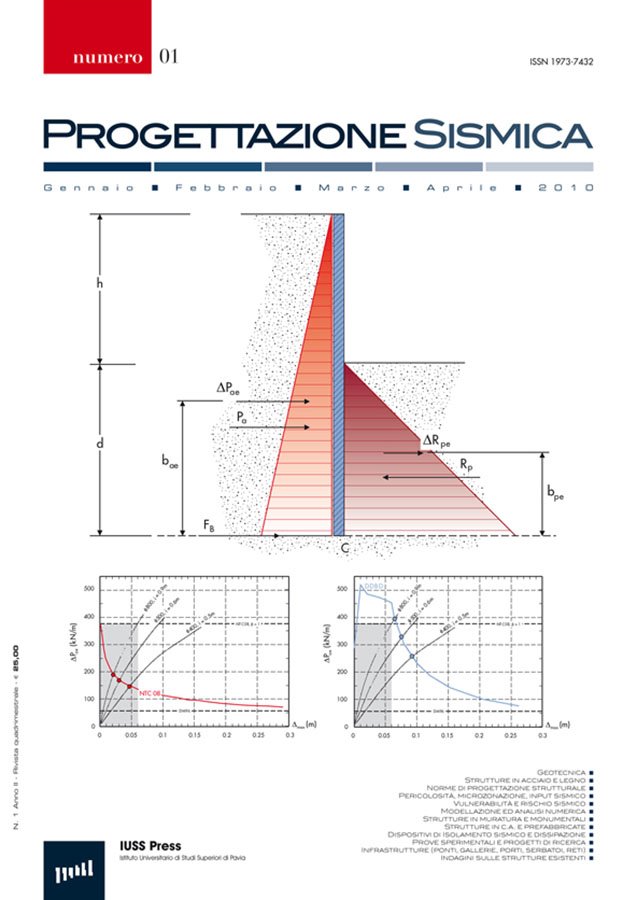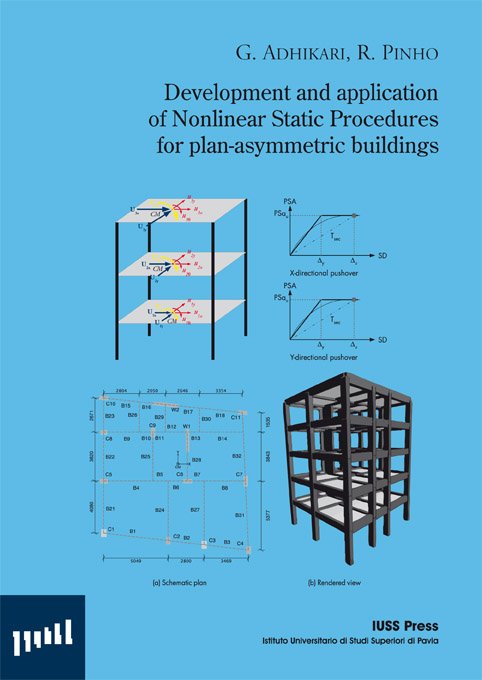Catalogue

Progettazione Sismica2010 n.1
01/01/2010
Displacement-Based Earthquake Loss Assessment: Method Development and Application to Turkish Building Stock
24/02/2010Development and application of Nonlinear Static Procedures for plan-asymmetric buildings
Original price was: € 25,00.€ 5,00Current price is: € 5,00.
G. Adhikari, R. Pinho
Research Report Rose 2010/01
ISBN: 978-88-6198-055-6
Plan-asymmetric buildings has shown considerable vulnerability in the past earthquakes, due to presence of floor rotation in addition to floor translations.
Out of stock
FUORI CATALOGO
Plan-asymmetric buildings has shown considerable vulnerability in the past earthquakes, due to presence of floor rotation in addition to floor translations. Moreover, torsional behaviour changes usually while transitioning from elastic to inelastic regime depending on the elastic properties of the system, on the in-plan distribution of lateral load resisting elements’ strength and on the level of the seismic intensity. Therefore, conventional elastic analysis based evaluation and/or design procedures are unable to predict such behaviour of plan-asymmetric buildings. Among nonlinear analysis procedures, inherent intricacy limits the application of nonlinear dynamic analysis, despite of its attractive accuracy, in widespread professional application. Nonlinear Static Procedures (NSPs), on the other hand, provide an optimal trade off between simplicity and accuracy, if performed carefully, and thus gaining popularity in the professional field in recent times. Following a comprehensive literature review, two versions of Adaptive Capacity Spectrum Method (ACSM) are proposed and then evaluated through an extensive analytical parametric study using three reinforced concrete buildings with their two hypothetical torsional variants that represent a wide range of torsional characteristics, namely torsionally stiff, torsionally similarly stiff and torsionally flexible. First version, denoted as ACSM2, applies the standard ACSM procedure to derive capacity curves and subsequent local responses are amplified by a factor estimated using elastic response spectrum analysis. The second version, named as ACSM3, encompasses torsional effects directly into the capacity curve derived via a displacement based adaptive pushover algorithm modified for the inclusion of rotational inertia and bi-directional seismic loading. Noting the limitations of current definitions of equivalent SDOF system for use in plan-asymmetric buildings, a new definition is proposed following the basics of substitute structure concept, which can be used in both adaptive and invariant frameworks of nonlinear static procedures. Inclusion of actual deformed shape in the definition of equivalent SDOF system in adaptive fashion lead to significant enhancement in local response prediction by conventional NSPs (in this case, the N2 method), especially when elastic modes are coupled as in the case of torsionally similarly stiff structures. The verification analyses demonstrate that the ACSM3 provides excellent prediction of local responses for all categories of torsional variants whilst the ACSM2 predictions show good resemblance with the dynamic analysis only when elastic modes are uncoupled such as torsionally stiff and flexible buildings. This report ends with a brief description of areas for future research.

